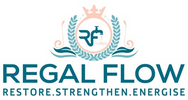
Can You Run Hot Water Through a Water Softener? A UK Guide
Got a Water Softener? You’re winning against limescale. But can you run hot water through it? Short answer: best not to. We’ll explain why, how these systems work, and the Benefits & Effects of Soft Water—without risking damage to your setup.
Understanding Water Softener Operation and Temperature
How a Water Softener Works (Ion Exchange)
Think of your water softener like a swap shop. Hard water, packed with calcium and magnesium, flows into a resin tank filled with tiny beads. These beads are coated in sodium or potassium ions. As the water passes through, the hard minerals get swapped for the softer stuff. That’s ion exchange in action. It’s this clever chemistry that keeps your pipes clear, your skin smoother, and your appliances scale-free.
Typical Water Flow Through a Softener (Cold Water)
In a standard UK home, the water softener is connected to the cold water supply, usually right after the mains enters the house. Why? Because softeners are designed to treat cold water only. Once the water's been softened, it moves on to your boiler or cylinder where it’s heated safely. This layout keeps everything ticking along nicely, without putting your softener under strain.
The Question of Hot Water Through a Water Softener
Manufacturer Guidelines and Recommendations
Open up any water softener manual and you’ll likely find a big red warning: do not run hot water through the system. Most softeners are designed to handle water at or below 49°C (120°F). Go beyond that, and you're risking damage to the delicate internal parts—particularly the resin beads that do all the hard work. Manufacturers aren’t just being picky. They’ve tested their systems to work at specific temperatures for a reason.
Potential Risks of Hot Water
Damage to Resin Beads
Resin beads are the unsung heroes of your softener. But they’re not made for heat. When hot water flows through them, it can cause the beads to swell, warp, or degrade entirely .Once that happens, their ability to soften water drops off a cliff—and your home starts to feel the effects. Think chalky kettles and stiff laundry.
Reduced Softening Efficiency
Even if the resin doesn’t melt straight away, hot water makes it sluggish. The ion exchange process works best at lower temperatures. Warmer water interferes with this, letting more calcium and magnesium sneak through. That means you're technically using your softener, but not getting the benefits.
Potential for System Damage
It’s not just the resin that suffers. Hot water can warp seals, damage plastic fittings, and stress internal components. Over time, this leads to leaks, faults, and expensive repairs. And here’s the kicker—most warranties won’t cover damage caused by incorrect usage.
Why Hot Water Isn't Typically Softened Directly
The Location of Water Heaters in the System
Here's where the system layout matters. In nearly every UK home, the water softener is installed before the water heater or boiler. This means that only cold water enters the softener. It’s treated there and then passed on to the heater. The result? Your hot water is technically already softened—it just didn’t go through the system while hot. This setup avoids heat damage and still gives you the benefits of soft water from your hot taps.
Exceptions and Specific Scenarios
There are a few exceptions, but they’re rare. Some high-end softeners used in commercial settings are rated for slightly higher temperatures—usually up to around 60°C. Unless you’ve paid for a specialist system, that likely doesn’t apply to your household model. Another edge case is if hot water accidentally backs into the softener—say, due to incorrect plumbing or installation. That, too, can cause big issues. If in doubt, it’s worth checking with a qualified installer or plumber.
Conclusion: Best Practices for Water Softener Use
Running hot water through your water softener? It’s a gamble, and not one worth taking.
Here’s the takeaway:
-
Always connect your softener to the cold water line.
-
Avoid exposing the system to temperatures above 49°C.
-
Follow the manufacturer’s maintenance advice and service intervals.
By sticking to best practices, your softener will protect your home for years to come. You'll enjoy clearer pipes, softer laundry, better skin, and longer-lasting appliances—all without a meltdown (literally). Still tempted to try hot water through the system? Let the kettle do the heating, not your softener.
👋 Prefer to talk it through? Our water specialists are ready to help — reach out today and get clear, honest advice.
Call us on 0121 630 1130, info@regalflow.co.uk, or click the green WhatsApp icon.
More Water Softener info our customers have found helpful
Top Benefits of Installing a Water Softener in Your Home
Is Soft Water Better for Your Skin?
Can You have a Boiling Water Tap with a Water Softener?
Will a Water Softener Remove Build-up in Pipes?
How Long Does it Take a Water Softener to Clear Pipes?
Does a Water Softener Affect Cold Water?
What is the Downside of a Water Softener?


Leave a comment